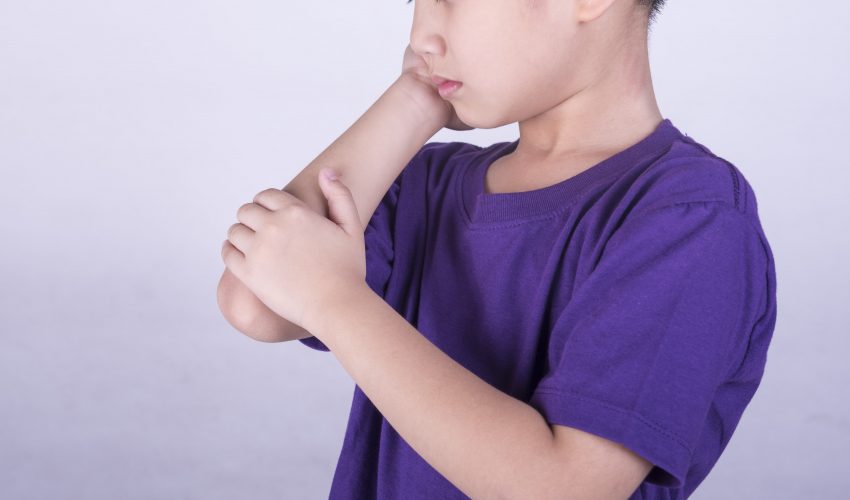Post Views: 1,495
Views No Comments
Arthritis is characterized by inflammation of the joints, which usually affects adults or senior citizens. However, juvenile arthritis affects the tissue that lines the joints, also known as the synovium, in children and adolescents, 16 or younger
While in older people arthritis can be caused by natural wear and tear, in children, this disease could be considered autoimmune, which means that the immune system is mistakenly attacking the body’s tissues, cells and organs. Like other autoimmune disorders, the causes behind the immune system’s actions are unknown.
But, scientists speculate that a combination of genetics, environmental triggers, and exposure to certain infections may be responsible for the development of the disease.
When it comes to this disease, there are 5 different types of juvenile arthritis.
The first is called systemic arthritis and can affect any part of the body. It is usually accompanied by a high fever and rash on the torso, arms, and legs. This type of arthritis can also affect several internal organs such as the heart, the liver, and the spleen.
The second type of juvenile arthritis is called oligoarthritis, which lasts around 6 months and affects fewer than 5 joints. The joints that are most commonly affected are the knees, ankles, and wrists. In contrast to systemic arthritis, oligoarthritis can affect the eye, most often the iris. It is more common in girls than in boys, but it can fade away with time and is usually completely gone by the time the patient reaches adulthood.
The third type, polyarticular juvenile idiopathic arthritis (pJIA) also known as polyarthritis, can affect at least five joints during its first 6 months, all of which are usually in the same side of the body. This disease can also affect the joints in the jaw and neck, as well as those in the hands and feet. It is also more common in girls than in boys and is the one that resembles adult arthritis the most.
Psoriatic arthritis is the fourth type of juvenile arthritis and is characterized by the simultaneous appearance of psoriasis and arthritis. In most cases, the child may experience the symptoms of only one part of the disease years before developing the other.
The last type is called enthesitis-related arthritis, which is a disease that usually affects the spine, hips, eyes and the entheses, which are the spots where the tendons attach to the bones. This type of arthritis often manifests in boys older than 8 years. It is most commonly observed in those who have a family history of arthritis of the back called ankylosing spondylitis.
Those who suffer from juvenile arthritis do not always manifest symptoms, as they can vary depending on its type. If there are any symptoms, they can include:
Since not every child can manifest symptoms, juvenile arthritis must be diagnosed through careful consideration and various examinations. Since these symptoms may also be confused with other diseases, the diagnosis of juvenile arthritis must be performed by first ruling out all other potential causes of the symptoms, such as bone afflictions, fibromyalgia, Lyme disease, lupus, or cancer.
In order to assist in the diagnosis, the doctor might take a complete medical history of the patient, which is then followed by several general tests, such as a blood count, urine or blood lab tests, X-rays, imaging tests such as an MRI, a blood culture to rule out blood infections, virus and Lyme disease tests, and bone marrow exams, among others.
Just like arthritis in adults, the treatment for juvenile arthritis revolves around nurturing in the child a healthy, active lifestyle, which is also supplemented by certain medications. However, the exact treatment will vary depending on the type of arthritis, and the intensity of its symptoms, considering that some types have more potential to cause joint damage and require more aggressive treatments.
When it comes to treating this disease, the general objectives are to relieve as much pain as possible, to reduce swelling of the joints and affected structures, to increase the child’s mobility and strength, and to prevent any further harm to the joints. The child’s healthy lifestyle may be supplement with certain drugs, including NSAIDs, SAARDs, corticosteroids, and antimetabolites. The first three of these drugs are used in the treatment of pain and swelling in different degrees, caused by the disease. The fourth type is used to preserve joint function throughout the years and to prevent any further joint damage to the child.
Arthritis is characterized by inflammation of the joints, which usually affects adults or senior citizens. However, juvenile arthritis affects the tissue that lines the joints, also known as the synovium, in children and adolescents, 16 or younger. Here is your guide to fully understand juvenile arthritis.

